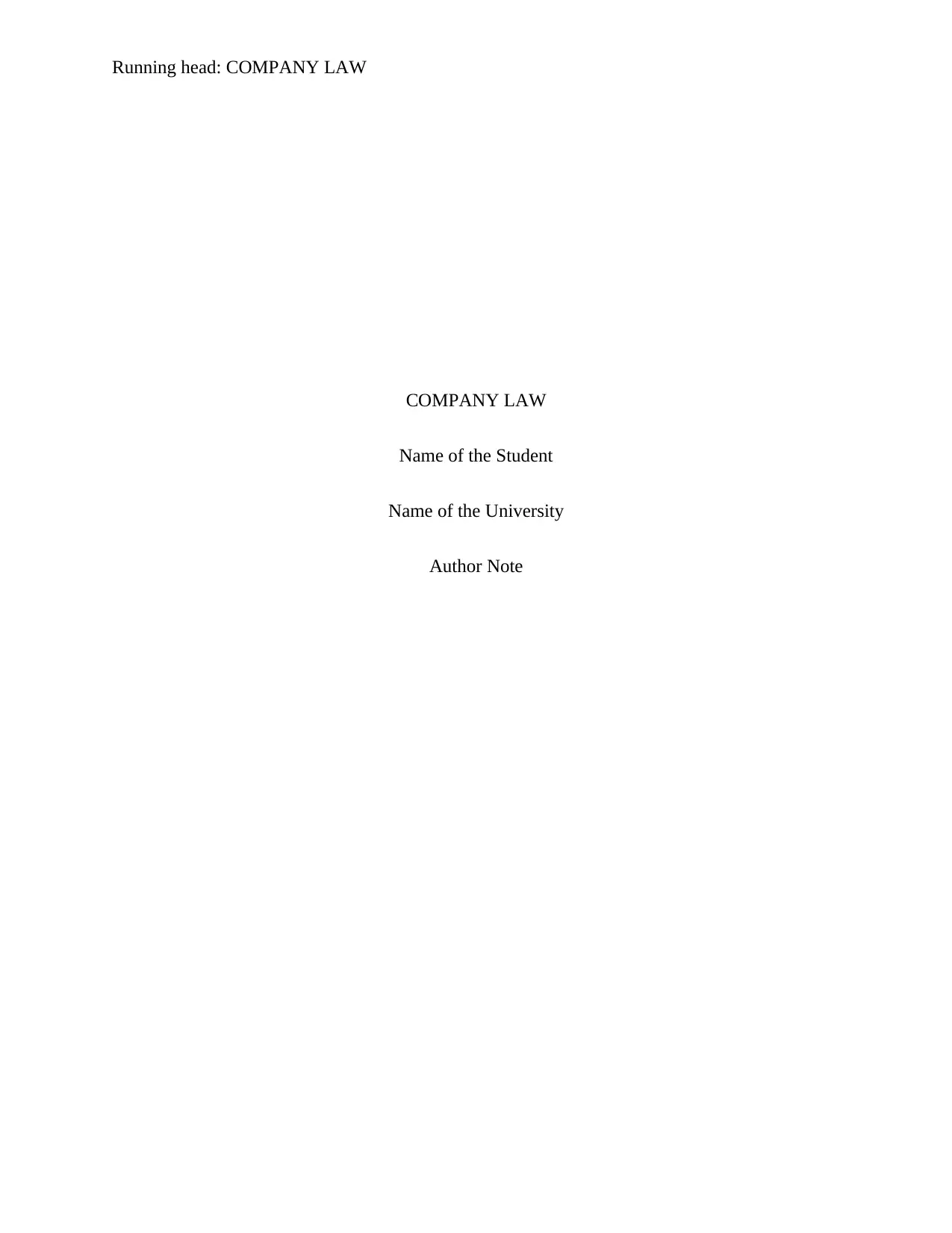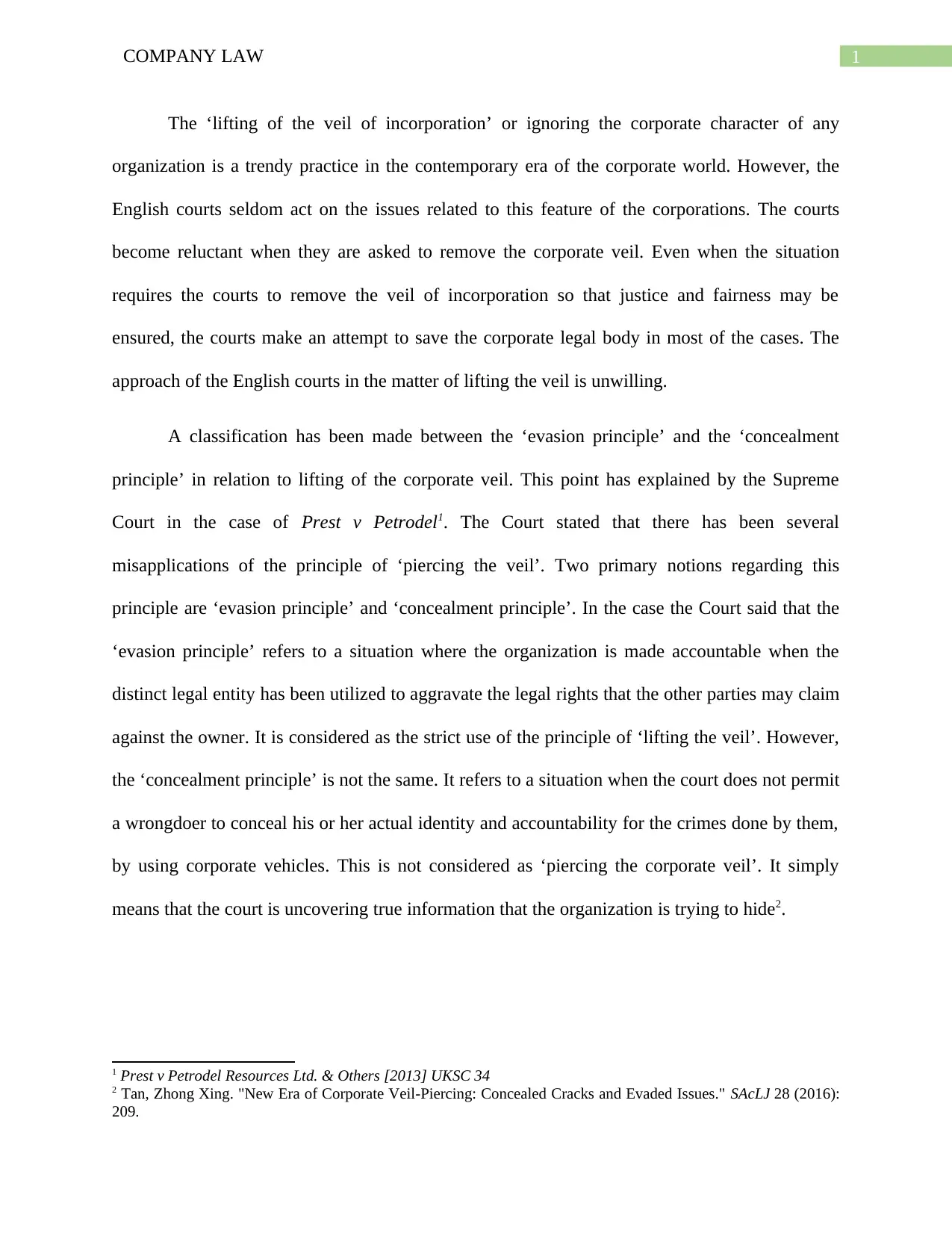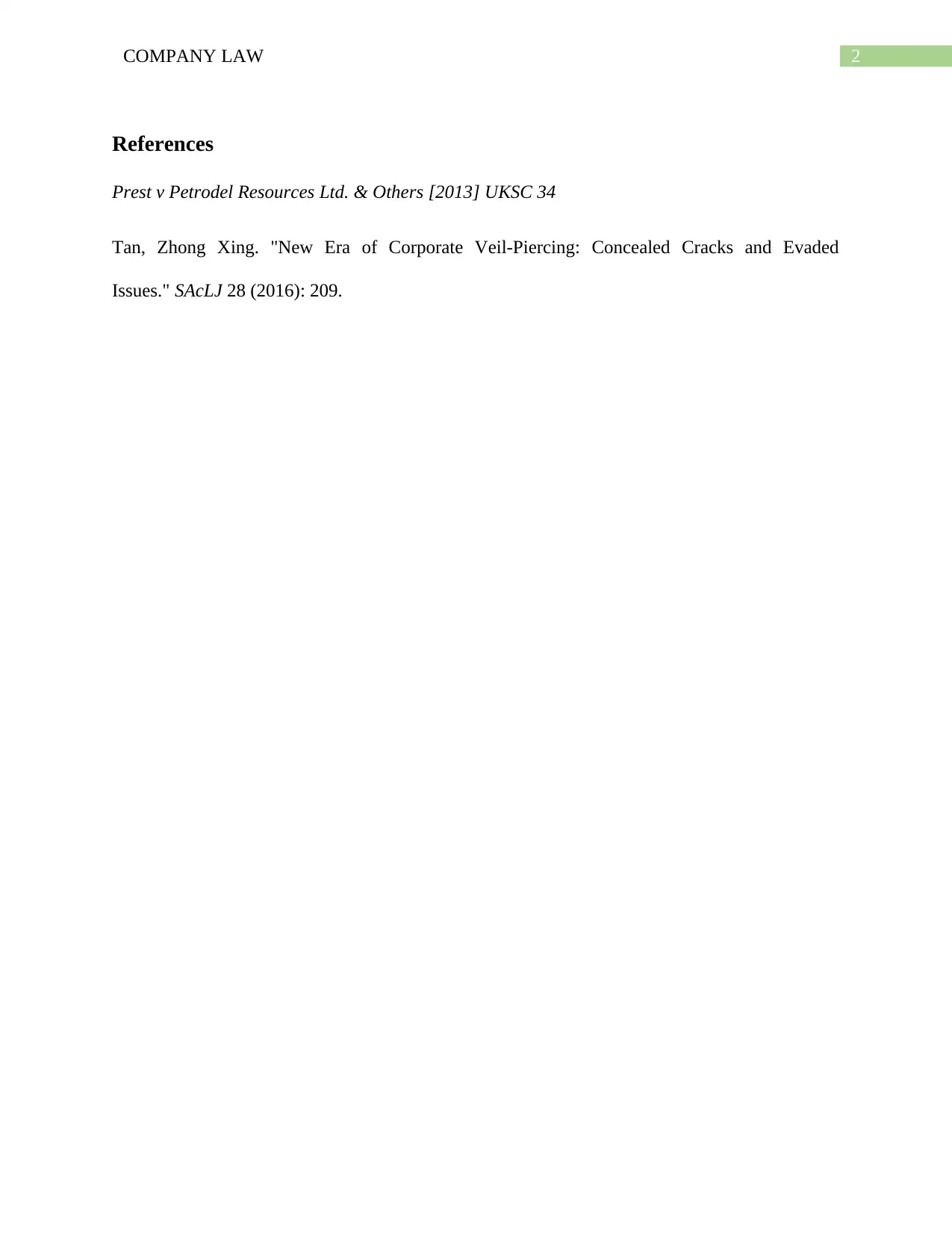Veil Lifting in Company Law: Courts' Approach and Principles
VerifiedAdded on 2022/12/18
|3
|437
|66
Report
AI Summary
This report explores the concept of 'veil lifting' in company law, focusing on the approach of the English courts. It examines the reluctance of the courts to remove the corporate veil and the circumstances under which they may do so to ensure justice and fairness. The report differentiates between the 'evasion principle' and the 'concealment principle,' as outlined in the case of Prest v Petrodel. The evasion principle involves holding organizations accountable for misusing the corporate structure to evade legal obligations, while the concealment principle prevents wrongdoers from hiding behind corporate vehicles. The report uses UK case laws to illustrate the principles of veil lifting, concealment, and evasion in company law.
1 out of 3










![[object Object]](/_next/static/media/star-bottom.7253800d.svg)